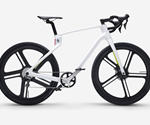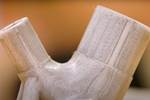Global bicycle demand growth drives carbon fiber demand growth
With the number of imported bikes to the U.S. on the rise, experts are suggesting a 13.13% increase in the market for carbon fiber frames.
Share
Read Next

According to a recent story in Bicycle Retailer and Industry News, citing the most-current U.S. Department of Commerce figures, there were 1.2 million bikes imported into the U.S. in April 2021 (not including e-bikes), with an import value of $140 million — a non-trivial increase from the $131 million figure in March.
The U.S. Census Bureau reports that in January 2021 there were imports totaling $124 million of which $69.8 million were from China, $30 million from Taiwan and $14.6 million from Cambodia.
According to a study released by market research firm Technavio (London, U.K.), there is a not-surprising and burgeoning demand for premium bicycles and, consequently, carbon fiber bicycle frames.
Technavio found that in 2021 there will be an increase of 13.13% in the market for carbon fiber frames, and it estimates that between 2021 and 2025 there will be a compound average growth rate (CAGR) of approximately 15%. That means a growth of 59.4 million bikes from 2021 to 2025.
But while there is the increase in more expensive bikes in the U.S., Technavio finds that the greatest demand for carbon fiber frames is coming from the Asia-Pacific (APAC) countries, including China, India, Sri Lanka and Pakistan.
Technavio determined that in 2020, APAC countries accounted for some 42% of the global market share for carbon fiber frames and it anticipates this demand will continue. Reasons cited include: (1) rising disposable income in those countries; (2) a rise in the number of young people in India; (3) more road and mountain bike racing occurring in the APAC region.
Here’s something to think about: According to Strava, a social platform for athletes (it includes more than 73 million in its community), on a global basis in 2020 cyclists logged 8.1 billion miles, of which 1.2 billion miles were cycled in the U.S.
Related Content
-
Cycle Inspect, UNSW investigate carbon fiber bicycle damage
The collaborative research initiative will explore the prevalence and impact of structural damage in carbon fiber bicycles currently in use by the general public, assessing the magnitude of the issue and raising awareness.
-
Colored carbon fiber composite bike wheels launched at The Cycle Show
Wheel brand Parcours reveals composite bike wheels using Hypetex colored carbon fiber to achieve aesthetic, lightweight and performance goals.
-
Running shoe insoles get a lift with thermoplastic fiberglass tapes
FlexSpring insoles take advantage of unidirectional, continuous fiberglass and thermoplastics to enable next-level performance for the everyday runner.

.jpg;width=70;height=70;mode=crop)













.jpg;maxWidth=300;quality=90)
